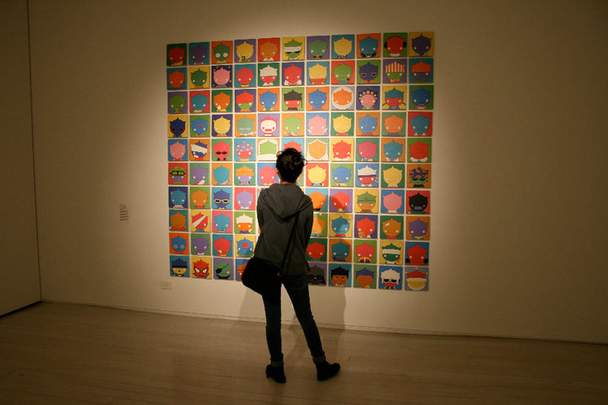The Big Bang
This popular converted warehouse space makes the most of its four storeys, whether through the whirlwind of plastic refuse that reaches to the third landing or the musky, ethereal parchment man that, stretched out, snakes through the roof.
Overview
China sometimes feels a lot further away than geography implies which makes visiting the White Rabbit a voyage of discovery and viewing its artworks a decoding of foreign communiques. Gallery owners Kerr and Judith Nielson, billionaires who believe art is for sharing, collect Chinese art post-2000 an era of renaissance without contemporary peer. The Beijing they showcase is full of creatives with immaculate technical training, abundant resources and plenty to say.
The Nielsons' handpicked treasures have broad appeal. From the grit and clarity of Wang Jiuliang's Beijing Besieged By Waste photo series, depicting landfills whose effects aren't buried, to the bright neosurrealism of Chen Fei's Beyond Satisfaction 2006 No.2, a stab at the consumer revolution, and He Jia's party of Happy Balloon Men (much like what they sound), the works represent an extraordinary range. They share no one theme, besides their having once called out to their collector, but you'll be struck again and again by the reflections on daily life and identity, the pop culture imagery, the sense of play and the purpose behind even the most abstracted forms.
It's art that grabs you and that makes you want to grab it, art that makes you understand the omnipresence of the 'no touching' signs. (Although hover inquisitively and the nice attendant may offer you a feel of a sample of one of Ai Weiwei's individually handcrafted porcelain Sunflower Seeds from a pot beside the 500-kilogram installation.)
The third of White Rabbit's six-month-long exhibitions, Big Bang goes to show that its owners' collection, and the creative engine that feeds it, will not idle anytime soon. The art isn't the only attraction, either; this is a slick converted warehouse space that makes the most of its four storeys, whether through the whirlwind of plastic refuse that reaches to the third landing (Wang Zhiyuan's Thrown to the Wind) or the musky, ethereal parchment man that, stretched out, snakes through the roof (Li Hongbo's Paper). The space also boasts a tearoom, a theatrette, some inspired events and generous staff who'll contextualise the work you're viewing without being pesky.





